1.1: Women and Poverty
- Page ID
- 16894
Chapter 1: Women and Poverty
Chapter Summary
- Overview
- Profile: Roshaneh Zafar: Social Entrepreneur Empowers Women
- Project: Honduran Women Fight Poverty One Coffee Bean at a Time
- Questions
- Additional Resources
Chapter 1 discusses the link between gender and poverty. Women are the majority of the poor due to cultural norms and values, gendered division of assets, and power dynamics between men and women. Indeed, women and girls bear an unequal burden of unpaid domestic responsibilities and are overrepresented in informal and precarious jobs. Women also possess inherent agency and knowledge that is overlooked by policy-makers as they form and implement poverty reduction plans. Development interventions continue to be based on the idea that men are breadwinners and women are dependents.
The chapter positions poverty as the root cause of gender inequality and discusses social entrepreneurship as a path toward women’s economic and social empowerment. The author introduces two approaches to addressing poverty among women: microcredit and small business cooperatives. The microfinance approach is exemplified by the Kashf Microfinance bank, founded by Roshaneh Zafar in Pakistan in 1996. By 2009, Kashf included 14,192 active borrowers, deposits of 3.8 million, and 42,073 depositors. COMUCAP, an organization based in the region of La Paz, Honduras, is representative of the cooperative approach. The program trained women to grow and sell coffee beans as a means to gain economic independence and escape domestic violence. Both case studies emphasize that helping women increase their economic agency gives them footing to combat poverty and achieve independence.
Key Terms
- Cooperative
- Domestic labour
- Dulce Marlen Contreras
- Economic empowerment
- Kashf Foundation
- La Coordinadora de Mujeres Campesinas de la Paz (COMUCAP)
- Microfinance
- Millennium Development Goals (MDGs)
- Roshaneh Zafar
- Social entrepreneurship
- World Bank
Overview
By Geeta Rao Gupta

Figure 1.1: Women constitute a majority of the poor and are often poorest of the poor. A woman hugs her granddaughter in their shack near Castelli, Chaco, Argentina.
Women constitute a majority of the poor and are often the poorest of the poor. The societal disadvantage and inequality they face because they are women shapes their experience of poverty differently from that of men, increases their vulnerability, and makes it more challenging for them to climb out of poverty. In other words, poverty is a gendered experience — addressing it requires a gender analysis of norms and values, the division of assets, work and responsibility, and the dynamics of power and control between women and men in poor households.
In most societies, gender norms define women’s role as largely relegated to the home, as mother and caretaker, and men’s role as responsible for productive activities outside the home. These norms influence institutional policies and laws that define women’s and men’s access to productive resources such as education, employment, land and credit. There is overwhelming evidence from around the world to show that girls and women are more disadvantaged than boys and men in their access to these valued productive resources. There is also ample evidence to show that the responsibilities of women and the challenges they face within poor households and communities are different from those of men. Persistent gender inequality and differences in women’s and men’s roles greatly influence the causes, experiences and consequences of women’s poverty. Policies and programs to alleviate poverty must, therefore, take account of gender inequality and gender differences to effectively address the needs and constraints of both poor women and men.

Figure 1.2: Pakistani women are paid about US$2 for every 1,000 bricks they make at this brick kiln in Multan, Pakistan.
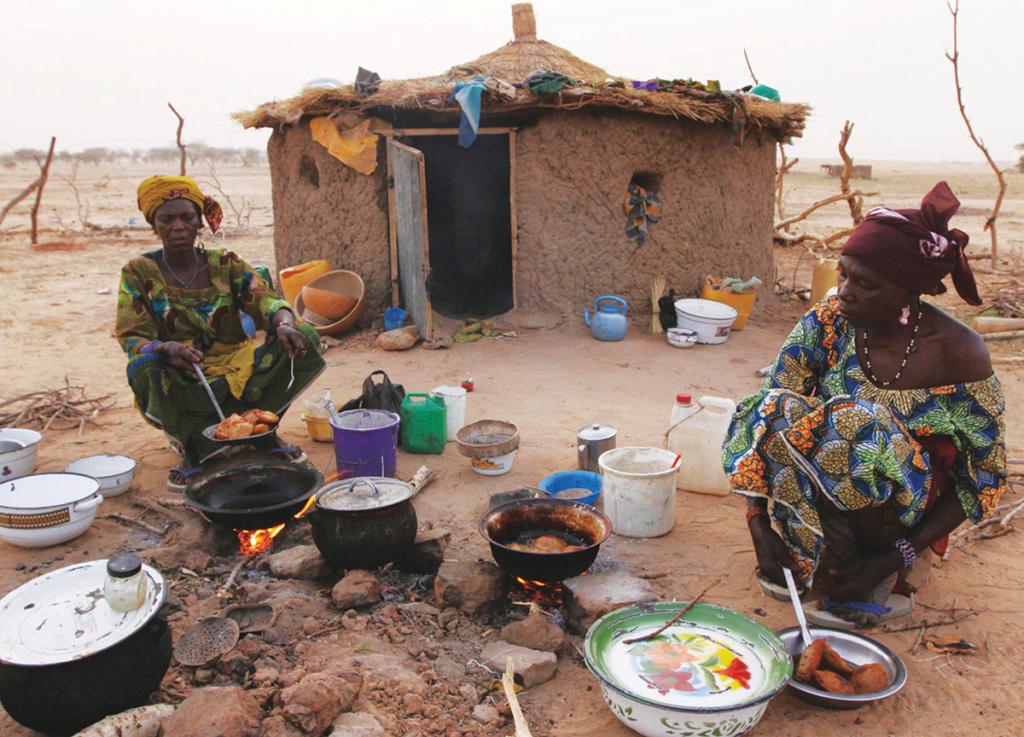
Figure 1.3: Women in Gadabeji, Niger, cope with a food crisis created by drought. Worldwide, women are driven further into poverty by inflated food prices.
Women’s Experience of Poverty
Girls and women in poor households bear a disproportionate share of the work and responsibility of feeding and caring for family members through unpaid household work. In poor rural households, for example, women’s work is dominated by activities such as firewood, water and fodder collection, care of livestock and subsistence agriculture. The drudgery of women’s work and its time-intensive demands contribute to women’s “time poverty” and greatly limit poor women’s choice of other, more productive income-earning opportunities.
Faced with difficult time-allocation choices, women in poor households will often sacrifice their own health and nutrition, or the education of their daughters, by recruiting them to take care of siblings or share in other household tasks. This is just one piece of a pattern of gendered discrimination in the allocation of resources in poor households. Evidence shows that the gender gaps in nutrition, education and health are greater in poorer households. This lack of investment in the human capital of girls perpetuates a vicious, intergenerational cycle of poverty and disadvantage that is partly responsible for the intractable nature of poverty.
Why Focus on Women in Poverty?
A focus on poor women as distinct from men in efforts to reduce poverty is justified because women’s paid and unpaid work is crucial for the survival of poor households.
Women are economic actors: They produce and process food for the family; they are the primary caretakers of children, the elderly and the sick; and their income and labor are directed toward children’s education, health and well-being. In fact, there is incontrovertible evidence from a number of studies conducted during the 1980s that mothers typically spend their income on food and health care for children, which is in sharp contrast to men, who spend a higher proportion of their income for personal needs. A study conducted in Brazil, for example, found that the positive effect on the probability that a child will survive in urban Brazil is almost 20 times greater when the household income is controlled by a woman rather than by a man (Quisumbing et al., 1995).
Yet women face significant constraints in maximizing their productivity. They often do not have equal access to productive inputs or to markets for their goods. They own only 15 percent of the land worldwide, work longer hours than men and earn lower wages. They are overrepresented among workers in the informal labor market, in jobs that are seasonal, more precarious and not protected by labor standards.
Despite this, policies and programs that are based on notions of a typical household as consisting of a male bread-winner and dependent women and children often target men for the provision of productive resources and services. Such an approach widens the gender-based productivity gap, negatively affects women’s economic status, and does little to reduce poverty. Addressing these gender biases and inequalities by intentionally investing in women as economic agents, and doing so within a framework of rights that ensures that women’s access to and control over productive resources is a part of their entitlement as citizens, is an effective and efficient poverty reduction strategy.
Ways to Reduce Women’s Poverty
Over the years there have been many efforts to reduce women’s poverty. Investments to increase agricultural productivity, improve livestock management and provide livelihood opportunities are key ways to address the needs of poor rural women. Another, more popular and effective intervention that currently reaches millions of women worldwide is microfinance — small loans and other financial services for poor women who have no access to the formal banking system. Microfinance programs have succeeded in increasing the incomes of poor households and protecting them against complete destitution.
Yet another strategy to improve the economic status of poor women has been to increase women’s access to and control of land. Women who own or control land can use the land to produce food or generate income, or as collateral for credit.
These strategies are promising and offer potential for meeting the international community’s commitment to gender equality as demonstrated most recently through the inclusion of Goal 3 in the Millennium Development Goals (MDGs). All that remains now is for that commitment to be transformed into action.
Geeta Rao Gupta is a senior fellow at the Bill & Melinda Gates Foundation’s Global Development Program and an internationally recognized expert on gender and development issues, including women’s health, economic empowerment, poverty alleviation and gender equality. Prior to joining the foundation, Rao Gupta was president of the International Center for Research on Women (ICRW). She also serves on the Steering Committee of aids2031, an international initiative commissioned by UNAIDS, USAID’s Advisory Committee for Voluntary Foreign Aid and the boards of the Moriah Fund, the Nike Foundation, the MAC AIDS Fund and the Rural Development Institute.
PROFILE: Roshaneh Zafar – Social Entrepreneur Empowers Women
By Shafqat Munir
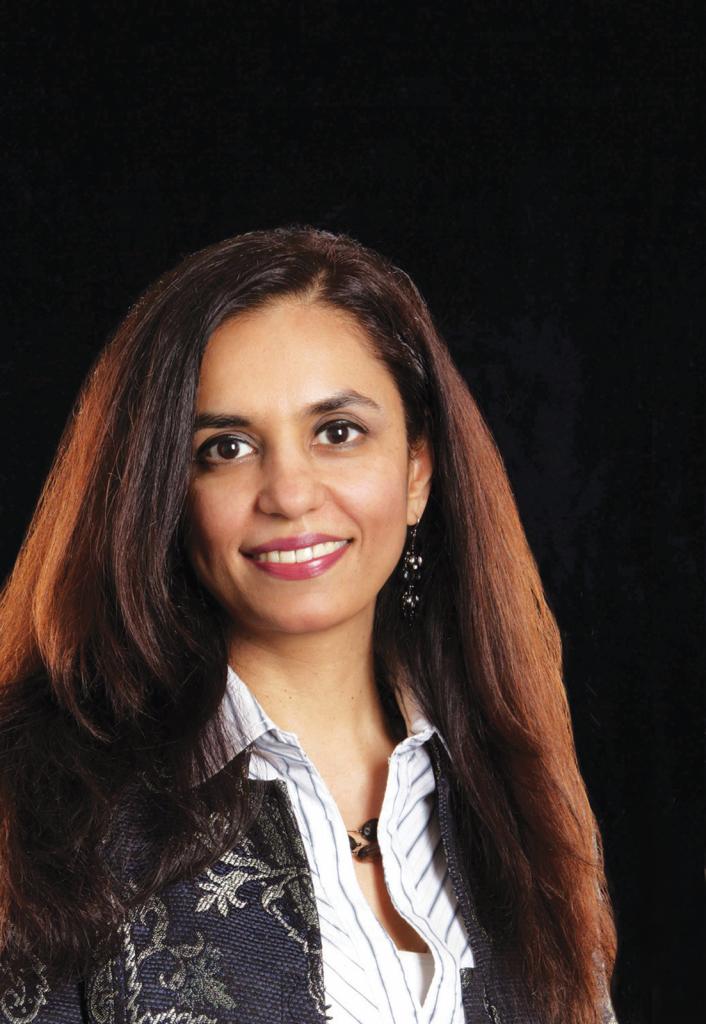
Figure 1.4: A young Pakistani woman turns social entrepreneur, establishes Kashf Foundation, and through microfinancing enables impoverished Pakistani women to improve their lives.
“You feel really great when you enable poor families to transform, change their mindset and bring up their children with a concept of financial management at the grass-roots level. This can ensure a decent living for them,” says Pakistani entrepreneur Roshaneh Zafar.
Since 1996, Zafar’s small microfinance initiative at Kashf Foundation, the first of its kind in Pakistan, has changed the lives of more than a million people in 26 districts in Pakistan by extending small credits worth a total of U.S. $202 million currently, according to the Kashf Foundation website (www.kashf.org). Zafar successfully runs a fully chartered bank, the Kashf Microfinance Bank, with 31 branches in three provinces, Punjab, Khyber Pakhtunkhwa and Sindh. MIX Market (www.MIXMarket.org), a microfinance information data and analysis service, reports that in 2009 Kashf Microfinance Bank had 14,192 active borrowers, a gross loan portfolio of U.S. $5 million, with deposits of $3.8 million by 42,073 depositors. The average balance per borrower is $350. This grass-roots bank, like the foundation, is called “Kashf” — “miracle” or “revelation” in Urdu — to evoke the process of self-discovery.
Zafar, who attended Yale University and the Wharton School of Business at the University of Pennsylvania, has the required financial knowledge and skills. She was a specialist on women in development and community for the U.N. Development Programme and the World Bank. She has the passion of a women’s rights activist. An early endeavor was co-founding Bedari, a women’s crisis intervention center in Islamabad. The daughter of a renowned jurist and constitutional expert, S.M. Zafar, Roshaneh Zafar started from a one-room office next to her father’s law offices 15 years ago. She sees social entrepreneurship as her lifetime mission.
“I am proud of building an institution. I am passionate about transforming the lives of families, bringing them out of poverty,” she says. She believes that economic well-being leads to policies that favor women’s development, and without giving economic opportunities to women, social development and empowerment are hardly possible.
Both men and women must work together to increase family incomes and contribute to development of the community and the country: Only then can Pakistani society become gender-sensitive, she says.
“Economic empowerment of women working through families can guarantee a change in lives and livelihoods of the poor. Microfinancing women-led families is a sustainable way to ensure women’s development,” Zafar says.
The realities of the poverty-ridden and resource-constrained women in villages in remote parts of Pakistan, and a will to help change their fate, prompted Zafar to quit her World Bank job in 1995 and enter social entrepreneurship: “While working with the World Bank, I realized that until we involve women and give them ownership in water and sanitation and other infrastructure projects, we cannot ensure implementation and success in these projects, as women are the ones who take care of water-fetching for rural families and those on the periphery of urban centers.”
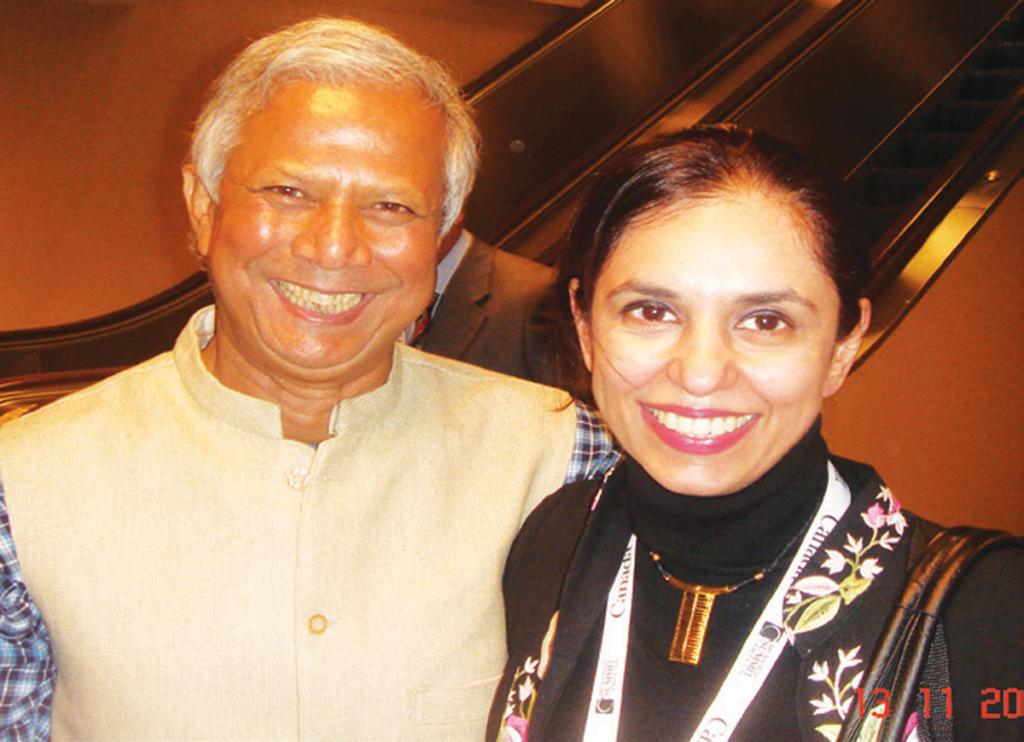
Figure 1.5: Zafar and her mentor, Nobel Peace Prize winner and Grameen Bank founder Muhammad Yunus, attend a microcredit conference.
It was a turning point in Zafar’s career when she heard a 70-year-old woman in Kalat, Balochistan, saying the villagers knew that clean drinking water is healthy for their families but they needed money to buy it. Zafar decided to help them get that money and build better lives. She met Nobel Laureate Muhammad Yunus, the microfinance pioneer and founder of Bangladesh’s Grameen Bank, and expressed her desire to start a microfinance scheme to help the Pakistani poor gain sustainable economic stability. Her meeting with Yunus prompted her visit to Bangladesh, to learn from the Grameen Bank experience. Zafar studied the methods with Yunus for two years, and visited other successful projects in Nepal and India. In Pakistan she also benefited from the experiences of Abbottabad-based Sungi Development Foundation, founded by the late Omar Asghar Khan, and the Balochistan Rural Support Programme. She was inspired by the late Pakistani community development pioneer Akhter Hameed Khan and Shoaib Sultan Khan, a founder of the Aga Khan Rural Support Programme.
“After having varied experiences, I set up Kashf Foundation and I hired 1,800 young staff from local communities because I believed that enabling the young to earn their livelihoods is important, as they dominate the unemployed population of Pakistan,” Zafar recalls. Her success received recognition early when, in 1997, she was awarded a fellowship from the U.S.-based Ashoka Foundation, which supports innovative social entrepreneurs.
Kashf operates primarily in Pakistan’s suburbs: 70 percent of its work is on the urban periphery and 30 percent in rural areas. Most microfinance credits go to small traders: a cobbler’s shop, a small-scale jewelry business, a tea stall or restaurant. Families get loans to fund a business of their choice and for which they have skills.
Zafar’s clients have succeeded in a variety of ways. Zafar relates the story of 42-year-old Nasim Baji with pride. Nasim Baji runs a costume jewelry business with microfinancing provided by Kashf. She borrowed Rs. 1,000 (U.S. $10) 12 years ago to start her own bead jewelry enterprise, after weaving beads as a daily wage worker for a jewelry firm. She later diversified and today owns two molding machines to manufacture metal jewelry. She employs 30 women workers. Her husband works for her now. Her jewelry is sold in several cities. Nasim Baji inspires other women to set up small businesses to generate income.
“Microfinance is not all about giving loans to individuals, but it is meant to change mindsets of communities to enhance their ability to earn their livelihood and live with dignity. With families [working] together, microfinance-led trading produced sustainable dividends,” says Zafar. She explains that Kashf has expanded from working only with women to working with families. To increase access to capital, Zafar founded the Kashf Microfinance Bank. Zafar says that from the original 15 clients who were lent a total of $1,500 in 1996, Kashf has provided loans of $225 million to more than one million families. Kashf was among the first such institutions to offer insurance for clients, at a minimal premium, to assist in debt payment when the head of household dies.
Apart from Kashf, Zafar is a founding member of the Pakistan Microfinance Network and is a member of the U.N. Advisory Group on Inclusive Financial Services. In 2007, she was named a Skoll Foundation social entrepreneur, and has been the recipient of a number of prestigious international awards, including Pakistan’s highest civilian honor, the Tamgha-e-Imtiaz. Kashf Foundation was ranked 34 out of the top 50 microfinance institutions by Forbes magazine in 2007, and was honored in 2009 with the OneWoman Initiative Award by the U.S. State Department. More recently Roshaneh Zafar was a delegate to the U.S. Presidential Summit on Entrepreneurship held in Washington in April 2010 and is the recipient of the Vital Voices 2010 Global Leadership Award for Economic Empowerment.
Shafqat Munir is a journalist, researcher and communications specialist in Pakistan. He is the founder editor of Infochange News and Features Network (INFN), www.infochangepakistan.net, a leading Pakistani development and investigative news agency.
PROJECT: Honduran Women Fight Poverty One Coffee Bean at a Time
By Ritu Sharma
Honduran Dulce Marlen Contreras knew that poverty was the source of domestic violence and other problems afflicting women in her community, so she began an organization to educate women about their rights. It soon evolved into an agricultural cooperative that has given its members economic stability.
In 1993, Dulce Marlen Contreras founded La Coordinadora de Mujeres Campesinas de La Paz, or COMUCAP, to raise awareness about women’s rights in Honduras. A daughter of farmers in the rural region of La Paz, Honduras, Marlen was tired of watching the women of her community endure widespread alcoholism and domestic violence. Along with seven of her friends, Marlen began COMUCAP in order to educate local women about their rights, how to stand up for themselves and eventually become economically independent. Workshops and women’s shelters were critical to the mission, but Marlen soon realized that to reduce domestic violence for the long term, COMUCAP must attack the root problem, poverty.
Understanding the relationship between poverty and social ills, COMUCAP changed its approach. In addition to the consciousness-raising workshops, the organization started training women to grow and sell organic coffee and aloe plants. Traditionally, the women of La Paz looked after the children and relied on men for economic support. Growing coffee and aloe vera, selling the crops and developing products to sell not only enabled women to earn additional income for their families, but gave them economic independence and stability.
The initial reaction from the community was hostile. Women’s empowerment was seen as a threat to families and traditional family values. But as COMUCAP’s programs grew, Marlen and her friends started seeing results that altered family relationships: The more money the women made, the more power they were able to assert in the household. The community began to view the women of COMUCAP as economic contributors. More and more women now made decisions jointly with their husbands. The women could more effectively resist domestic abuse. Economic stability and equality within family structures dramatically decreased household violence and improved quality of life within COMUCAP families. All of these women’s children attend school.
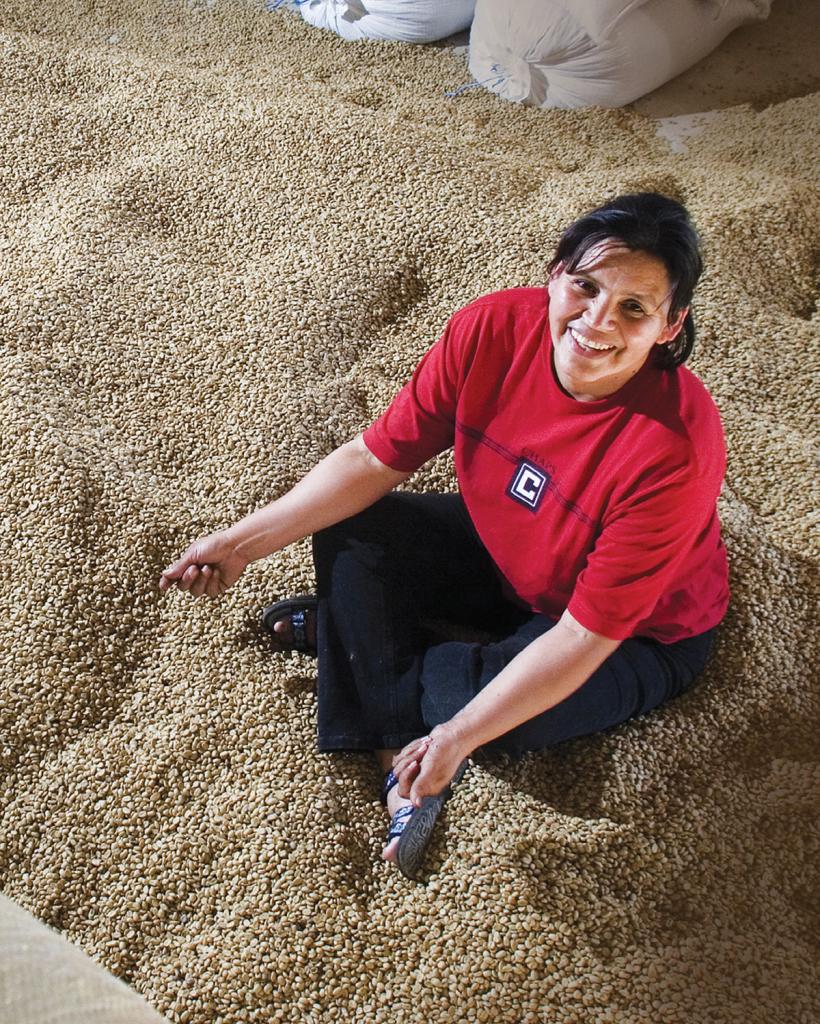
Figure 1.6: COMUCAP founder Dulce Marlen Contreras sits in the cooperative’s coffee storeroom. Coffee and aloe vera are COMUCAP’s main products.
Today COMUCAP provides employment and income to more than 225 women in rural Honduras through an expanding array of programs. Most programs focus on agricultural production: cultivation of oranges to make orange wine, aloe vera plants for a variety of products, organic coffee, organic fertilizers. COMUCAP programs offer technical advice in organic agriculture and support agricultural lending programs. Literacy political advocacy, grant proposal and fundraising workshops are available to COMUCAP-affiliated groups. There is now training and support for women to start their own businesses. Some women have purchased their own plots of land through loans from COMUCAP.
A cooperative agriculture program helps members form groups ranging in size from five to 25 women. They rent or own small pieces of land where they collectively grow coffee and aloe vera plants. The aloe vera plants are used to produce Wala Organic Aloe products such as shampoo, juices and desserts. In the COMUCAP business model, co-op members grow their own crops, refine and prepare them for use and manufacture products which are distributed in local, regional, national and international markets. The profits are then evenly divided among co-op members. A conscious decision was made to grow organic crops to make all organic products, which makes entry into international markets easier and causes less harm to the environment. COMUCAP’s coffee is USDA organic and Fair Trade certified. As of November 2009, COMUCAP was exporting more than 10,000 pounds of fair trade coffee to Europe each year and employing more than 100 women.
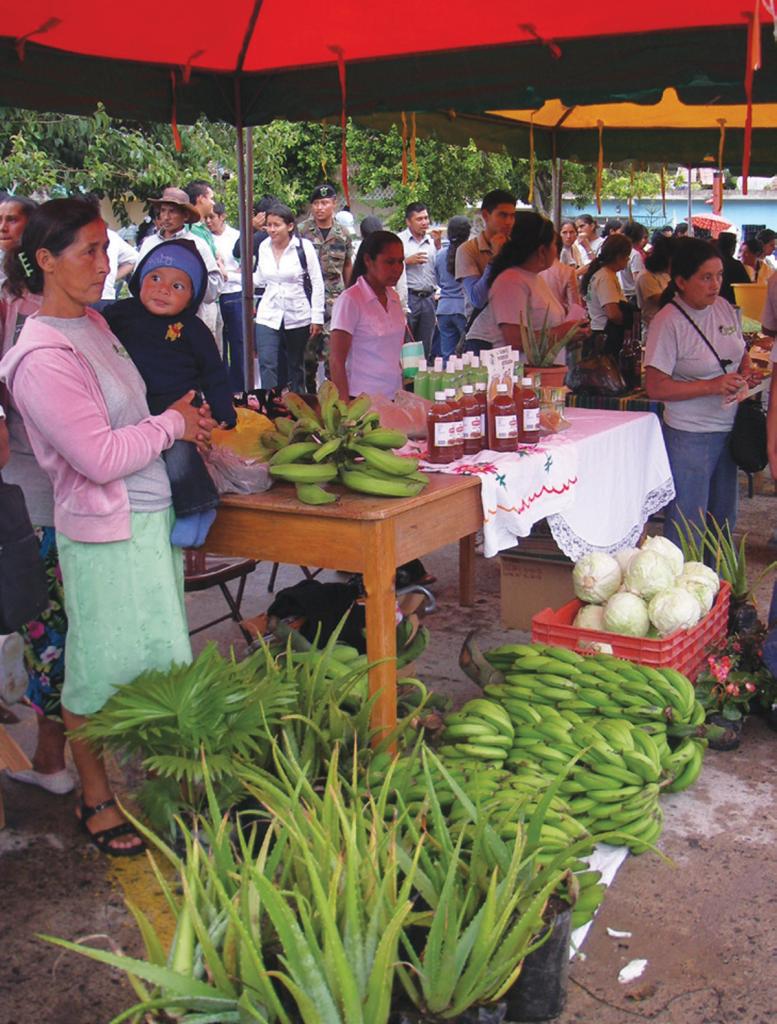
Figure 1.7: COMUCAP members sell their produce and other products at a local market. Their organic products are entering the international market.
Juana Suazo, a 55-year-old mother of six, is a prime example of why COMUCAP works. After separating from her abusive husband, Juana was suddenly faced with raising her children alone. At first she struggled to make ends meet by working multiple jobs. Then COMUCAP provided the means for her to create a sustainable future for her family. With the organization’s help, Juana started her own wine-producing business, which eventually allowed her to buy a home and five acres of land where she now grows coffee and vegetables. Today, she pays for two daughters to attend college and supports two sons living in the United States. Besides helping her escape domestic abuse and gain economic stability so her family can thrive, COMUCAP inspired Juana to give back to her community by studying law. She now dedicates her spare time to defending the rights of other women in need.
Greater economic opportunity and earning capacity allow women to escape violent situations, adequately care for their families and educate their children, thereby strengthening their communities. A woman’s economic independence increases her stature within and outside her household. Community-based organizations such as COMUCAP empower women to overcome poverty and regain dignity and peace in their lives — one coffee bean at a time.
Ritu Sharma is co-founder and president of Women Thrive Worldwide, a leading U.S. nonprofit organization that advocates for policies that provide economic assistance and capacity building for women living in poverty.
Multiple Choice Questions
Questions
- The Kashf Microfinance Bank was founded by…
- Roshaneh Zafar
- Shafqat Munir
- Dulce Marlen Contreras
- Emma Watson
- The way microfinance intends to achieve its desired outcomes is to…
- Provide grants to rural women in the global South
- Provide low-cost health insurance to women working in the informal sector
- Provide small-scale and low-interest loans to women with no access to formal banking services
- Improve the economic status of women by increasing access to land and property
- According to the text, why do women in particular spend a higher portion of income on their children’s education and health than on their own personal needs?
- Women are naturally better caregivers than men
- Social and political norms have relegated women to domestic and care responsibilities
- Men have been deemed suitable for formal labour outside the home
- Both B and C
- Roshaneh Zafar stated that it is imperative to involve women in water and sanitation infrastructure projects because…
- The donor organizations have specific gender quotas that must be met
- Women are the ones who take care of water-fetching and other infrastructure needs for rural families
- Inclusion of women is necessary to ensure implementation and success of the project
- Both B and C
- In public policy, the implications of viewing the household as run exclusively by men include…
- The gap between women’s and men’s productivity increases
- Women’s economic status decreases
- Policies created under this assumption have little impact on poverty
- All of the above
- COMUCAP is…
- A microfinance initiative
- A bilateral women’s education program created and implemented by USAID
- A program initiated by the government of Honduras
- An agricultural cooperative
- Dulce Marlen Contreras, founder of COMUCAP, realized that the root problem of domestic violence was…
- Alcohol
- Insufficient access to education
- Inadequate legal rights
- Poverty
- Once COMUCAP had a foothold in the community…
- The community became hostile
- Women started to assert their power and made joint household decisions with their husbands
- Instances of domestic violence and alcoholism became more rampant
- None of the above
Answers
- The correct answer is A. Shafqat Munir (answer B) is a journalist based in Pakistan and Emma Watson (answer D) is a British actor and the UN Goodwill Ambassador for the HeforShe campaign. Dulce Marlen Contreras (answer C) founded La Coordinadora de Mujeres Campesinas de La Paz (COMUCAP), but it was Roshaneh Zafar who founded the Kashf Microfinance Bank.
- The correct answer is C. The purpose of microfinance is to provide small-scale and low-interest loans to women with no access to formal banking services. Microfinance generally involves loans (lending money) instead of grants (giving money), making answer A incorrect. Microinsurance (answer B) provides small-scale health insurance accessible to those working in the informal sector. Answer D is a long-term desired outcome of microfinance.
- The correct answer is D. Both B and C are correct. Women’s distribution of income spending results from social and political norms which place women’s responsibilities within the home and men’s within the formal workforce. The textbook does not state that the association between women and family responsibilities is natural or inherent (answer A); rather that men and women’s differing family responsibilities are formed through a series of norms and institutional policies.
- The correct answer is D; both B and C are correct. It is necessary to include women in the development of infrastructure projects because they are the ones who are taking care of the needs of their families and are thus crucial in successful project implementation. Some organizations may have gender quotas for project involvement, but that is not the primary reason for including women (answer A).
- Answer D is correct.
- The correct answer is D. COMUCAP is a community-based agricultural cooperative that trains women to grow and sell organic coffee and aloe plants. COMUCAP is not a microfinance initiative (answer A). It is also not a bilateral initiative funded by USAID (answer B), and is not a government program (answer C).
- The correct answer is D. Alcohol (answer A) was identified as a significant contributor to domestic violence, but not the root cause. Legal rights (answer C) and education (answer B) were both part of COMUCAP’s original advocacy plan, but Marlen realized that the root problem to address was poverty.
- The correct answer is B. The hostility among the community was an initial reaction (answer A), but the chapter mentions that it faded as women became seen as economic contributors. Instances of domestic violence did not increase (answer C). They decreased as women and men began making joint decisions as a result of women’s increased financial power.
Discussion Questions
- Why is it important for international organizations and governments to include a focus on women as they seek to combat poverty?
- According to the chapter, what are some ways that women’s poverty can be reduced? What approaches are most effective? Why?
- What is the function and purpose of microfinance?
- Briefly describe how business cooperatives, such as COMUCAP, are organized.
- Why is it important that development programs address women as individuals with economic potential?
- What are the commonalities and differences between the Kashf Foundation and COMUCAP? How do both programs address gender inequality?
- What are the benefits, challenges, and limitations of microfinance as an approach to women’s economic empowerment?
Essay Questions
- To what extent is economic disempowerment the root cause of gender-based violence and poverty among women? Is the market the most effective means of addressing economic empowerment?
- The chapter highlights two poverty-reduction projects in the non-profit sector. What should be the role of non-profits as compared with the state in pursuing gender equality? What does the focus on non-state actors instead of government programming suggest about the connections between entrepreneurship as an approach to women’s empowerment and neoliberalism?
- The chapter discusses the importance of involving women in infrastructure projects. If women are key stakeholders in poverty reduction, should they be included in the implementation of infrastructure projects, their formation, or both? Why or why not?
Additional Resources
Central Intelligence Agency (CIA). “World Factbook.” (2016).
Frequently updated country profiles, comparisons, and information on history, government, economy, military, and numerous transnational issues.
https://www.cia.gov/library/publications/the-world-factbook/
Chowdhury, A. “Microfinance as a Poverty Reduction Tool: A Critical Assessment.” UNDESA Working Paper (2009).
Critical analysis of the effectiveness of microfinance as a universal poverty reduction tool.
http://www.un.org/esa/desa/papers/2009/wp89_2009.pdf
Davidson, J. & Strickland, R. “Leveling the Playing Field: Promoting Women’s Economic Capabilities and Human Rights.” International Centre for Research on Women (ICRW). (2000).
Expands on the microfinance movement and provides an in-depth analysis of the challenges and opportunities experienced by microfinance organizations through a feminist lens.
www.icrw.org/sites/default/files/publications/Leveling-the-Playing-Field-Promoting-Womens-Economic-Capabilities-and-Human-Rights.pdf
Garikipati, S., Johnson, S. Guérin, I. Szafarz, A. “Microfinance and Gender: Issues, Challenges and the Road Ahead.” Journal of Development Studies. 1 – 8. (2016).
http://dx.doi.org/10.1080/00220388.2016.1205736
Kabeer, N. “Gender, Poverty, and Inequality: A Brief History of Feminist Contributions in the Field of International Development.” Gender & Development 23(2), 189 – 205. (2015).
http://dx.doi.org/10.1080/13552074.2015.1062300
Nanda, P. et al. Making Change with Cash? “Impact of Conditional Cash Transfer Program on Girls’ Education and Age of Marriage in India.” International Centre for Research on Women (ICRW). (2016).
Evaluates the impact of conditional cash transfers in addressing gender inequality.
www.icrw.org/sites/default/files/publications/IMPACCT_OnePager_Webready.pdf
Razavi, S. The 2030 Agenda: Challenges of Implementation to Attain Gender Equality and Women’s Rights. Gender & Development 24(1), 25 – 41. (2016).
http://dx.doi.org/10.1080/13552074.2016.1142229
Sustainable Development Goals (SDGs).
The SDGs succeeded the MDGs as the global targets for poverty reduction as of 2015.
https://sustainabledevelopment.un.org/?menu=1300
World Bank. Conditional Cash Transfers (CCTs). (2009).
CCT programs are another mechanism of economic empowerment towards poverty reduction.
https://www.youtube.com/watch?v=BjHU7xYltb8
The World’s Women 2015. Poverty. (2015).
Annually updated global data and analysis on gender disparities in poverty.
http://unstats.un.org/unsd/gender/chapter8/chapter8.html
University of California Atlas of Inequality
Combines GIS and database technology with Internet multimedia to provide online resources that enable users to examine global change.
ccrec.ucsc.edu/news_item/uc-atlas-global-inequality-0

